While battery-powered tools are designed to increase productivity on the job site, even cordless power tools can be dangerous if all safety precautions are not followed carefully.
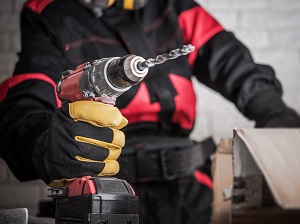
From cutting and drilling to sanding and grinding, there are a vast range of cordless power tools available, with the newer battery-powered tool technology providing even greater safety, comfort and convenience. Training on hand and power tool safety is important.
Manufacturer Instructions for Battery-Powered Tools
The operator’s manual provided with every power tool provides the best source of safety guidance for battery-powered tools. Workers should follow all warning and instructions for each specific power tool, compatible batteries and related accessories.
Training and Authorization Requirements
While battery-powered tools may decrease the electrical and trip hazards on the job, all workers should be trained and authorized before using any cordless power tools.
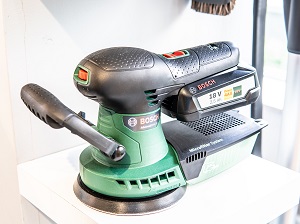
Inspect Tools and Batteries Before Use
Inspect all cordless power tools, accessories and battery packs for damage before each use. Remove all damaged power tools, batteries, and accessories from use and tag them “Do Not Use” (or similar).
OSHA Standard 1910.242(a) Each employer shall be responsible for the safe condition of tools and equipment used by employees, including tools and equipment which may be furnished by employees.
During the inspection, confirm the following:
- only manufacturer recommended batteries and accessories are being used
- all parts, including guards and accessories, are in place
- no guards, attachments, or accessories are broken, damaged or misaligned
- no parts are loose
- all switches are functioning properly
- there is no material on the tool that would cause it to be sticky or slippery during use
OSHA Standard 1926.300(a) All hand and power tools and similar equipment, whether furnished by the employer or the employee, shall be maintained in a safe condition.
Required PPE for Cordless Power Tools
Always wear eye protection when using any cordless power tool. Review the operator’s manual prior to use and confirm if the specific tool you are using requires additional PPE like a hard hat, hearing protection, non-skid safety shoes or a dust mask.
Dress properly for the job and do not wear loose clothing or jewelry when using power tools.
Keep your hair, clothing and gloves away from moving parts during power tool operation.
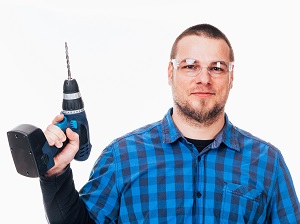
Safe Use and Operation Practices
Before using any power tool, ensure the work area is safe, well-lit and uncluttered. Do not operate power tools near flammable liquids, gases or dust. Power tools may create sparks which can ignite the dust or fumes.
Do not operate any power tool unless you have been trained to use it safely. Never use power tools when you are tired, or under the influence of drugs, alcohol or medication. Stay alert and avoid distractions when using any power tool.
Ensure the work is stable and secure to allow both hands free to operate the tool. Do not hold the work in your hand or against your body. Use clamps or a vice if needed. Keep your hands, and tool handles, dry, clean and free from oil and grease. Be sure that you have balance and control before starting the job. Always keep a firm footing when using power tools.
Select and use the right power tool for the job. Do not force the tool with excessive pressure, instead let the power tool do the work. If the power tool you are using begins to overheat, turn it off immediately.
Maintain Stable Work Conditions When Using Tools
- Ensure the work is stable and secure to allow both hands free to operate the tool.
- Do not hold the work in your hand or against your body. Use clamps or a vice if needed.
- Keep your hands, and tool handles, dry, clean and free from oil and grease.
- Be sure that you have balance and control before starting the job. Always keep a firm footing when using power tools.
- Select and use the right power tool for the job. Do not force the tool with excessive pressure, instead let the power tool do the work.
- If the power tool you are using begins to overheat, turn it off immediately.
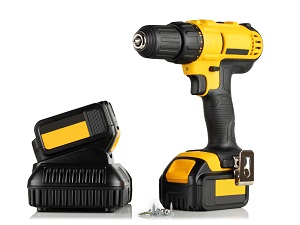
Battery Safety and Handling Practices
Before inserting a battery pack, be sure the power switch is turned off. Batteries for cordless power tools might not be interchangeable. Only choose batteries and chargers from the original power tool manufacturer.
Always transport and store batteries as instructed in the operator’s manual. Do not store batteries in a way that will allow them to come in contact with metal like keys, coins, screws, nails, or other small metal objects, as this can potentially short the battery causing sparks, fires or burns.
Remove the battery before changing accessories or performing any adjustments on the power tool. Remove the battery when the cordless power tool is not in use.
Battery Inspection, Storage, and Disposal
Inspect batteries before use for signs of damage. Do not use a battery that has been damaged. Never modify, disassemble or tamper with a battery, as the result can be unpredictable and dangerous.
Do not dispose of batteries by tossing them in the garbage, instead take them to a battery recycling center.

Transporting and Storing Cordless Tools Safely
Do not leave battery-powered tools in the rain or allow them to be stored where they might get wet. Transport and store cordless power tools in their designated cases and ensure the battery has been disengaged from the tool.
Injuries can occur when workers carry battery-powered tools in their arms, when the battery has not been removed, in such a way that allows the power switch to get flipped, causing sudden and unexpected injury. Tools may have safety mechanisms that aid to prevent these kinds of incidents, but it is always safer to remove the battery and carry power tools in a safe manner.
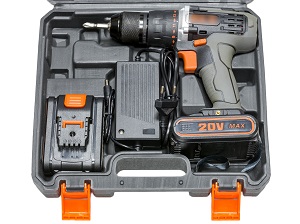
.jpg)

